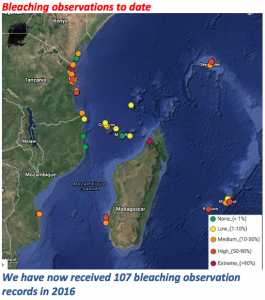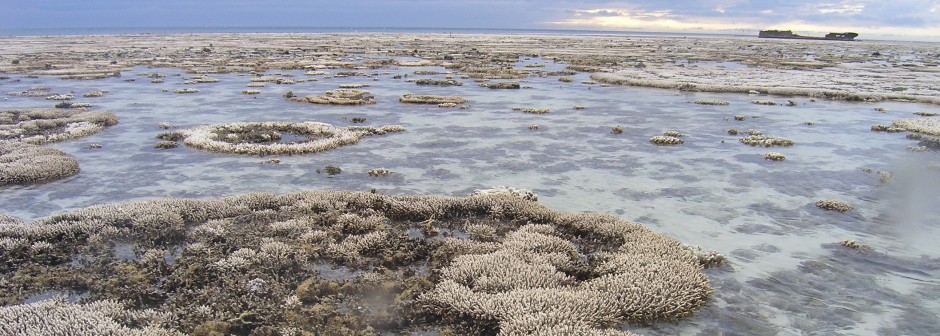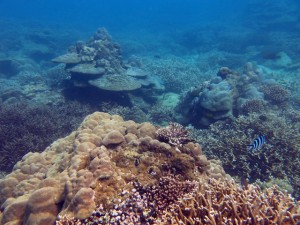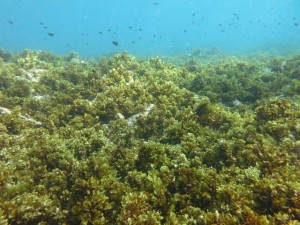Conditions are worsening in the Seychelles, as is indicative of a transition from a bleaching warning to an Alert Level 1 [4]. Figure 1 shows that two monitoring stations in the Seychelles have reported high and extreme bleaching events [3]. A reef in Cousin that had only showed 1% incidence of bleaching back in January is now faring worse in this month [1, 4]. In order to monitor the situation for the rest of the year, Nature Reef Rescuers scientists paired up with Nature Seychelles staff to survey the reef in Cousin and record its response to rising thermal temperatures [1]. It will be interesting to hear their reports in the next few months.

Figure 1. [3] Orange and red dots indicate high and extreme bleaching respectively. The Seychelles are located in the upper right-hand corner of the map.

Figure 2. [4] Data set shows thermal data from 2015 alongside the current trends of 2016. This data set is current as of April 18, 2016.
Nick Graham. [6] A healthy coral reef on the left and a macroalgal covered reef on the right. Both images were taken in the Seychelles. Reefs in the Seychelles will probably look more like the image on the right in the near future due to the effects of climate change and a greater occurrence of bleaching events.
The number one threat to the Seychelles as assessed by the Seychelles Foundation is climate change [5]. It is time that concerned citizens and national leaders bring themselves together to seriously discuss the impact of destroyed reef ecosystems due to climate change and how to combat local stressors that harm reefs. The most obvious wide-scale option is to lower carbon emissions collectively and turn to cleaner renewable resources such as solar. Another sure-fire option is to create Marine Protected Areas, places where there is zero extraction and zero tolerance for poachers. Less pronounced but equally important measures would be to slowly eliminate human obsession with plastics and waste, curbing the growth rate of the human population, and creating more effective waste water treatment options on islands that are home to large populations of people and reefs. This is my last blog post, but I certainly hope that all you continue to read about this massive bleaching event. I have found that the easiest way to do so is to follow Coral Reef Watch on Facebook in order to receive current updates.
- Malaisé, Louise. “Coral bleaching, again!” Saving Paradise. Wildlife Direct Feb 4, 2016. Web. April 18, 2016.
- van Oppen, M. J., Oliver, J. K., Putnam, H. M., & Gates, R. D. (2015). Building coral reef resilience through assisted evolution. Proceedings of the National Academy of Sciences. DOI: 10.1073/pnas.1422301112
- “WIO Coral Bleaching Alert.” Cardio East Africa. Web. 18 Apr. 2016.
- “Western Indian Ocean 5-km Coral Bleaching Data Products/Seychelles 5-km Bleaching Thermal Stress Gauges.” Coral Reef Watch. NOAA Satellite and Information Service. Web. 18 Apr. 2016.
- “Impacts of Global Warming on Corals.” WWF. Web. 18 Apr. 2016
- Hajira, Amla. “Seychelles Coral Reefs Just Beginning to Show Signs of Recovery, Says Researchers.” Seychelles News Agency. 14 July 2014. Web. 18 Apr. 2016.



